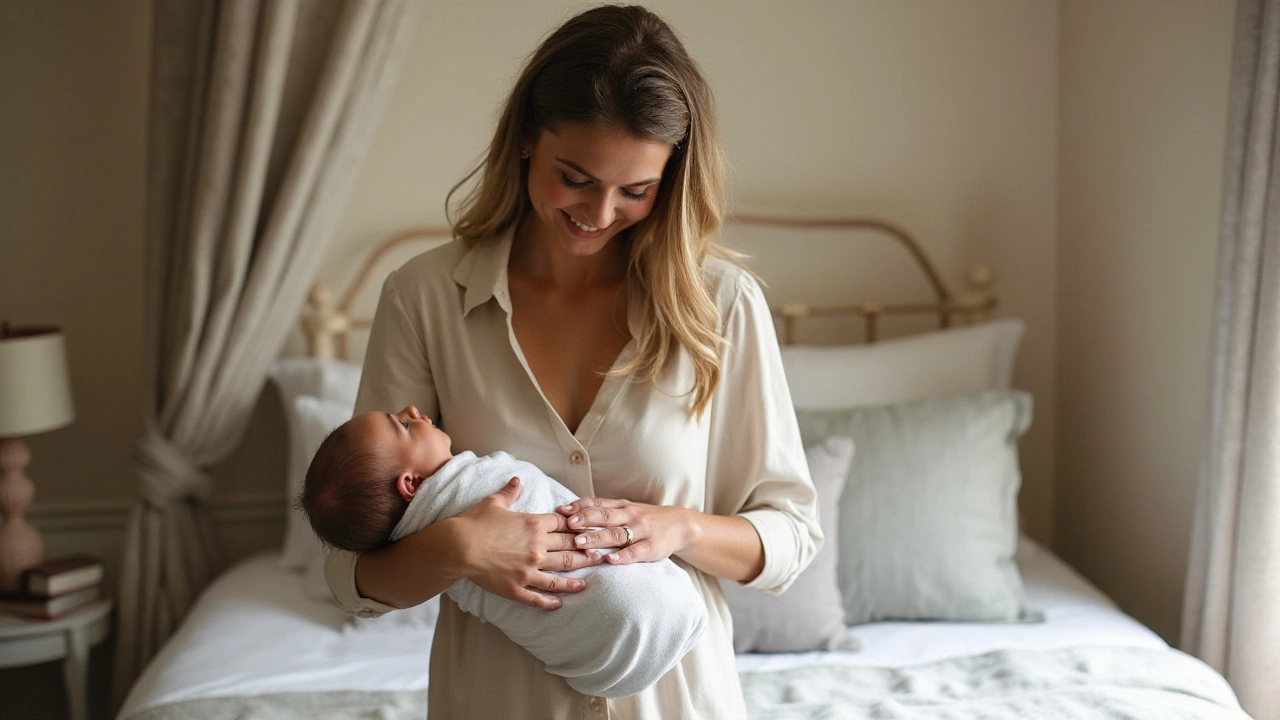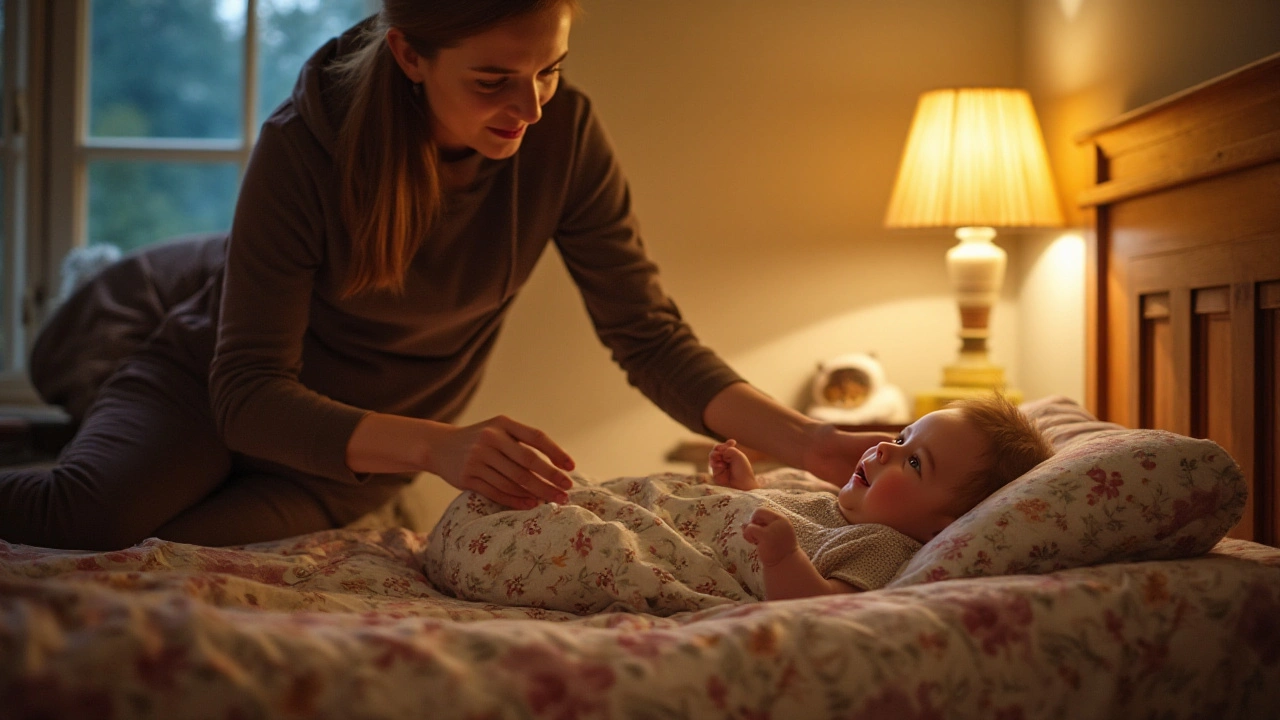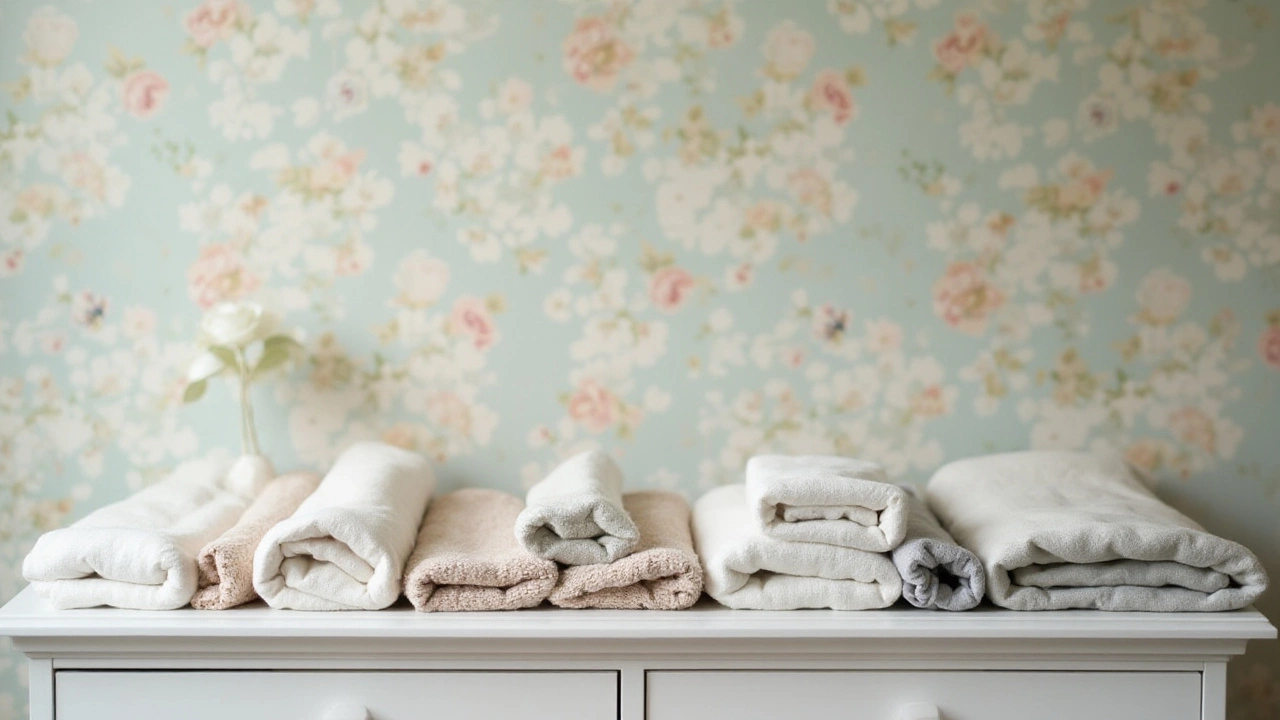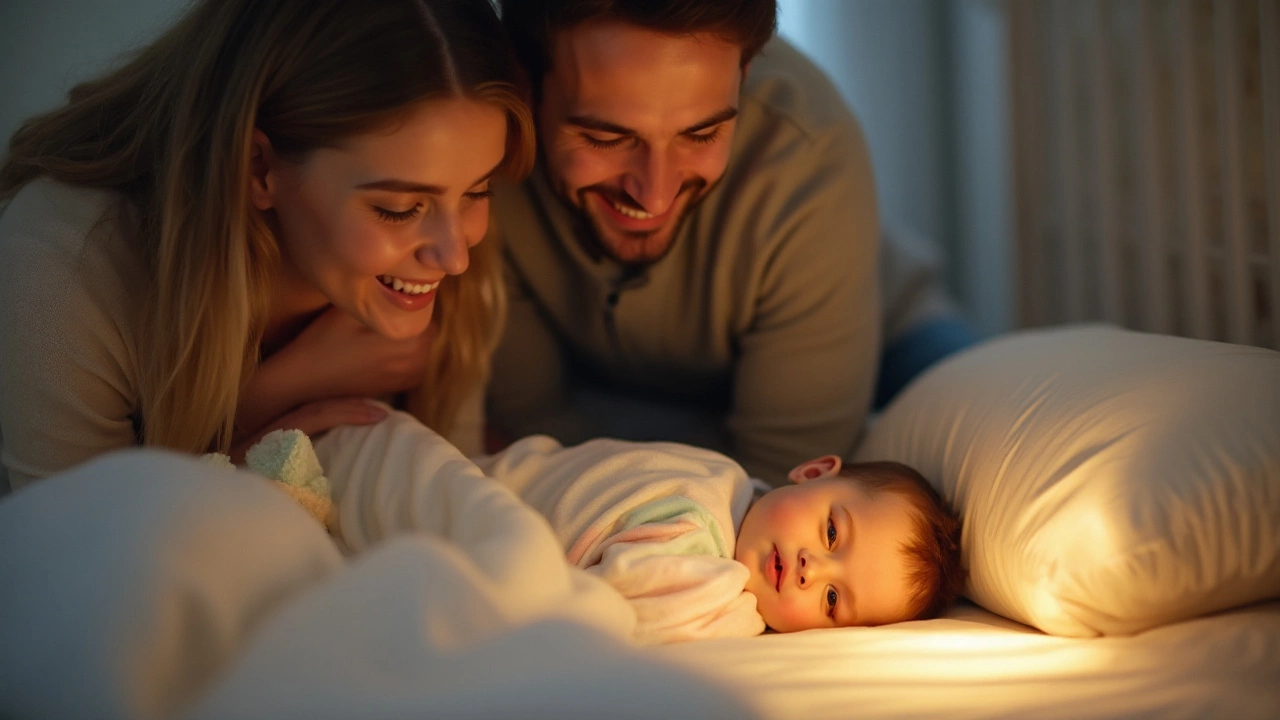When it comes to an infant's sleep, safety takes precedence over tradition. The use of conventional blankets can lead to hazardous situations, as they increase the risk of suffocation and entanglement for babies who have yet to master the art of moving freely in their sleep. This concern has steered many parents towards exploring innovative sleep solutions that cater specifically to their infants' need for warmth and security without jeopardizing their well-being.
Wearable items, such as sleep sacks and swaddles, have become popular substitutes for loose blankets. These alternatives offer parents peace of mind, knowing that their baby is comfortably wrapped while minimizing risks associated with traditional bedding. Each product is designed with breathable materials and adjustable features, ensuring that they fit snugly while allowing for necessary mobility. Paying attention to details such as room temperature and suitable sleepwear contributes significantly to creating a nurturing environment conducive to safe and restful sleep.
- The Risks of Traditional Blankets
- Wearable Solutions for Sleep Safety
- Essential Features of Safe Baby Bedding
- Guidelines for a Comfortable Sleep Environment
The Risks of Traditional Blankets
Using traditional blankets for infants might seem harmless, but they bring along certain serious risks that parents need to be aware of. One of the primary concerns is the potential for suffocation. When babies sleep, they often move inadvertently, and a loose blanket can easily cover their faces, obstructing breathing passages. Given that infants lack the motor skills needed to remove such an obstruction, it can quickly turn into a dangerous situation. According to the American Academy of Pediatrics, the use of pillows, quilts, and loose bedding increases the risk of Sudden Infant Death Syndrome (SIDS), which is a terrifying prospect for any parent.
Another risk factor associated with traditional blankets is the possibility of overheating. Babies are unable to regulate their body temperature as effectively as adults. A heavy or dense blanket can cause a baby to become too hot, which not only leads to discomfort but also contributes to other health issues. Swaddling, when done excessively or with thick materials, exacerbates this problem, again underscoring the need for breathable and appropriately designed sleep solutions.
“Keeping your baby's crib as bare as possible is crucial for safe sleep. That means no pillows, quilts, or any soft objects that could obstruct breathing.” – American Academy of Pediatrics
Entanglement is another significant hazard. Infants can easily get their tiny limbs tangled in loose bedding. This presents a risk not only for restricted movement but also for possible dislocation or soft-tissue injuries. The fabric of some traditional blankets can also lead to choking hazards if parts become loose and swallowable. These factors paint a clear picture: the traditional blanket, though seemingly simple and comforting, poses complex problems for a little one's safe sleep environment. Many parents have found solace in choosing modern alternatives that reduce these risks while still ensuring their babies stay warm and comfortable through the night.
| Risk Type | Explanation |
|---|---|
| Suffocation | Blankets covering face can block airways. |
| Overheating | Thick blankets can cause unwanted temperature increase. |
| Entanglement | Loose blankets can wrap around limbs and cause injury. |

Wearable Solutions for Sleep Safety
In recent years, the landscape of baby sleep safety has changed dramatically, with wearable solutions stepping into the spotlight as ideal alternatives to traditional blankets. The primary reason parents are turning towards these options is their design, which keeps babies snug without posing the risk of overlying or suffocation. Wearable blankets, like the popular sleep sacks, have opened new horizons in infant sleepwear, addressing these concerns with innovative solutions tailored for comfort and security.
The construction of these wearable blankets ensures freedom of leg movement while keeping the torso securely wrapped, offering warmth without the weight of a blanket. Made from breathable materials such as cotton and muslin, these products are particularly beneficial as they regulate temperature and prevent overheating, a common issue associated with loose bedding. Parents can find sleep sacks in various sizes, accommodating infants from newborns to toddlers, and many models feature zippers or Velcro closures for easy changing, which is particularly helpful during late-night routines.
Swaddles, another popular choice, deserve mention for their capacity to mimic the womb, providing a cozy sleep environment that can help soothe a fussy baby. It's important to consider that while swaddles can be effective, they must be used properly to prevent hip dysplasia and ensure that infants can still move their hips freely. Some models, like the convertible swaddle, cater to this concern by allowing parents to transition their baby from a swaddled state with arms inside to a more relaxed position as their child grows and develops motor skills.
An element worth noting is how these alternatives fit within the larger picture of safe sleep recommendations by pediatric experts. According to the American Academy of Pediatrics, the safest way for infants to sleep is on their backs in a crib with no loose articles around. As such, these infant cozy sleep solutions align perfectly with expert guidelines, reinforcing the importance of using them as part of a comprehensive strategy to reduce Sudden Infant Death Syndrome (SIDS) risk. A recent survey found that more than 60% of new parents prefer sleep sacks due to their ease of use and their perceived safety benefits, a testament to their growing popularity and functionality.
Incorporating wearable blankets into your nightly routine doesn't have to be difficult. Many parents recommend having a couple on hand to swap out as needed, ensuring your baby rests comfortably throughout the night. It’s also useful to experiment with various products and find what works best for your child, noting any brand-specific features that might appeal to your needs. For instance, some parents might prioritize organic materials for sensitive skin, while others may look for products that promise easy laundering without compromising durability.
"Safety doesn’t mean sacrificing comfort; it means enhancing it through informed choices," notes Dr. Emily Garner, a pediatrician specializing in newborn care.

Essential Features of Safe Baby Bedding
Choosing the right bedding for your baby can be both a joyful and challenging task. With safety as the primary concern, parents today are spoiled for choice with various innovative options available in the market. However, identifying the essential features that make baby bedding truly safe requires some thoughtful consideration. When selecting bedding for your infant, ensure it is made from breathable materials. Breathability ensures proper air circulation, significantly reducing the risk of overheating and sudden infant death syndrome (SIDS), something every new parent dreads. Natural fibers like cotton and bamboo are excellent choices because they provide both comfort and breathability.
A snug and secure fit is another critical feature to look for in safe bedding. Bedding that is too loose can bunch up and pose a suffocation hazard, while a proper fit eliminates such dangers. Prioritize fitted sheets that hold securely over the mattress instead of loose blankets and top sheets, which are not recommended for infants. Easy-to-use fastenings, such as zippers, are also important as they simplify securing your baby without needing multiple layers. Such features ensure that the sheet stays in place, which means your baby remains safe throughout the night.
Design without distractions plays a vital role too. While it might be tempting to pick a bedding set with colorful prints and embellishments, it's best to stay simple and minimalistic to guarantee nothing interferes with safe sleep. Avoid any extras like buttons, ribbons, or strings, as these can become choking hazards. According to the Consumer Product Safety Commission, decorations such as plush toys and pillows are also best avoided in cribs due to the hazards they pose. Indeed, ensuring a minimalist design can prevent any accidents related to unexpected crib contents.
Ease of maintenance is an often overlooked aspect but remains vital when choosing baby bedding. New parents will appreciate the convenience of machine-washable materials that can withstand frequent laundering without degrading in quality. The convenience of easy cleaning means parents can spend more quality time with their infants rather than worrying about stains or allergens. It's wise to go for materials that are hypoallergenic to safeguard against irritations, as delicate baby skin can be sensitive to certain fabrics and cleaning agents.
Longevity and versatility are beneficial too when selecting bedding. As babies grow rapidly, their sleeping habits change, and what works over a few months may need adjustments soon after. Investing in versatile bedding solutions adaptable to different seasons and climates can ensure your baby remains comfortable all year round. Consider sleep sacks with adjustable layers that cater to fluctuating room temperatures and provide extra comfort during colder nights.
"Most infant sleep experts recommend using a sleep sack or wearable blanket rather than loose bedding as a safe sleep practice," notes Dr. Mary Ann LoFrumento, a pediatrician renowned for her work in improving infant sleep safety.
The benefits of making informed decisions about your baby's sleeping environment can't be overstated. Safe bedding lays the foundation for your baby's healthy sleep patterns and development. Not only does this help in reducing potential risks, but it also allows for peace of mind, knowing your child is sleeping safely and soundly. It's a journey that nurtures the relationship between parent and child, as both find solace under the watch of a restful night's sleep.

Guidelines for a Comfortable Sleep Environment
Crafting the perfect sleeping environment for your baby is based on factors spanning from temperature control to the selection of appropriate sleep accessories. Baby sleep safety is paramount, and creating a space where comfort meets security requires a keen understanding of both contemporary research and age-old wisdom. Begin with establishing an optimal room temperature; experts often suggest maintaining a range between 68 and 72 degrees Fahrenheit. This temperature range ensures that the baby remains neither too hot nor too cold, a balance that impacts both the comfort and safety of your infant.
Choosing the right bedding accessories can be somewhat of an art form. It's advisable to opt for alternatives to blankets like sleep sacks or wearable blankets, as these keep little ones warm without the risk associated with loose bedding. These wearable solutions are crafted to address the specific needs of infant sleep, encouraging safer rest by reducing risks such as SIDS. A crucial tip is to steer clear of bed-sharing, no matter how tempting it may seem for quick feedings or comforting during unsettled nights. Safe sleep guidelines advocate for keeping the baby's crib free of toys, pillows, and bumpers, in order to maintain an uncluttered and safe sleep zone.
Tune in to the importance of sensory comfort as well. The use of soft lighting, specifically warm, gentle illumination, aids in creating a serene ambience conducive to sleep. Noise considerations are equally significant; while some infants thrive with white noise machines to mask household sounds, others might do better with the simple presence of a gentle lullaby. The tactile experience is non-negligible; babies enjoy the softness and warmth of natural fibers, so prioritize bedding made from organic cotton or bamboo materials. These materials provide breathability and comfort, enhancing the sleeping experience.
Creating a Routine
Part of establishing a comfortable sleep environment involves entrenching routines that promote swift transitions into sleep mode. A consistent sleep schedule is as crucial as the physical set-up of the sleep environment. Regular bedtime rituals, such as a warm bath followed by a gentle massage or storytelling session, signal to your baby that it's time to wind down. Acknowledging the pacing of these routines is necessary; length should not compromise the overall calming intent. According to Dr. Carol Ash, a sleep expert, “Establishing a nighttime ritual helps to program your baby's biological clock, setting the stage for a peaceful, uninterrupted night of sleep.” It's these rhythmic patterns that over time, associate specific activities with relaxation and sleepiness.Ultimately, every infant's needs are unique, prompting ongoing observation and adjustments. While one may prefer the soothing hum of a fan, another might find comfort in the silence. As parents, tuning into these preferences while adhering to key safety guidelines ensures that not only is the baby cocooned in coziness but also safeguarded against preventable risks. Such mindfulness in blending safety, comfort, and routine, results in a harmonious sleep environment that supports your baby's development.
